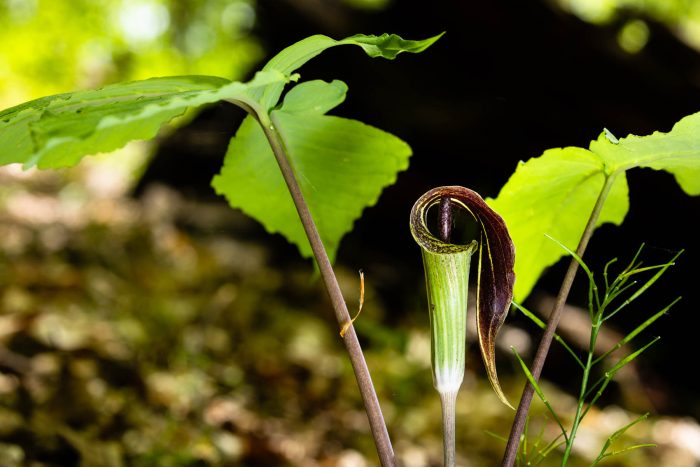Jack-in-the-pulpit
Arisaema triphyllum
Also known as bog onion or Indian turnip, the jack-in-the-pulpit is a perennial plant in the Arum family, which includes relatives like skunk cabbage and arrow arum. Its hooded flower blooms in the spring and gives the plant its common name.

